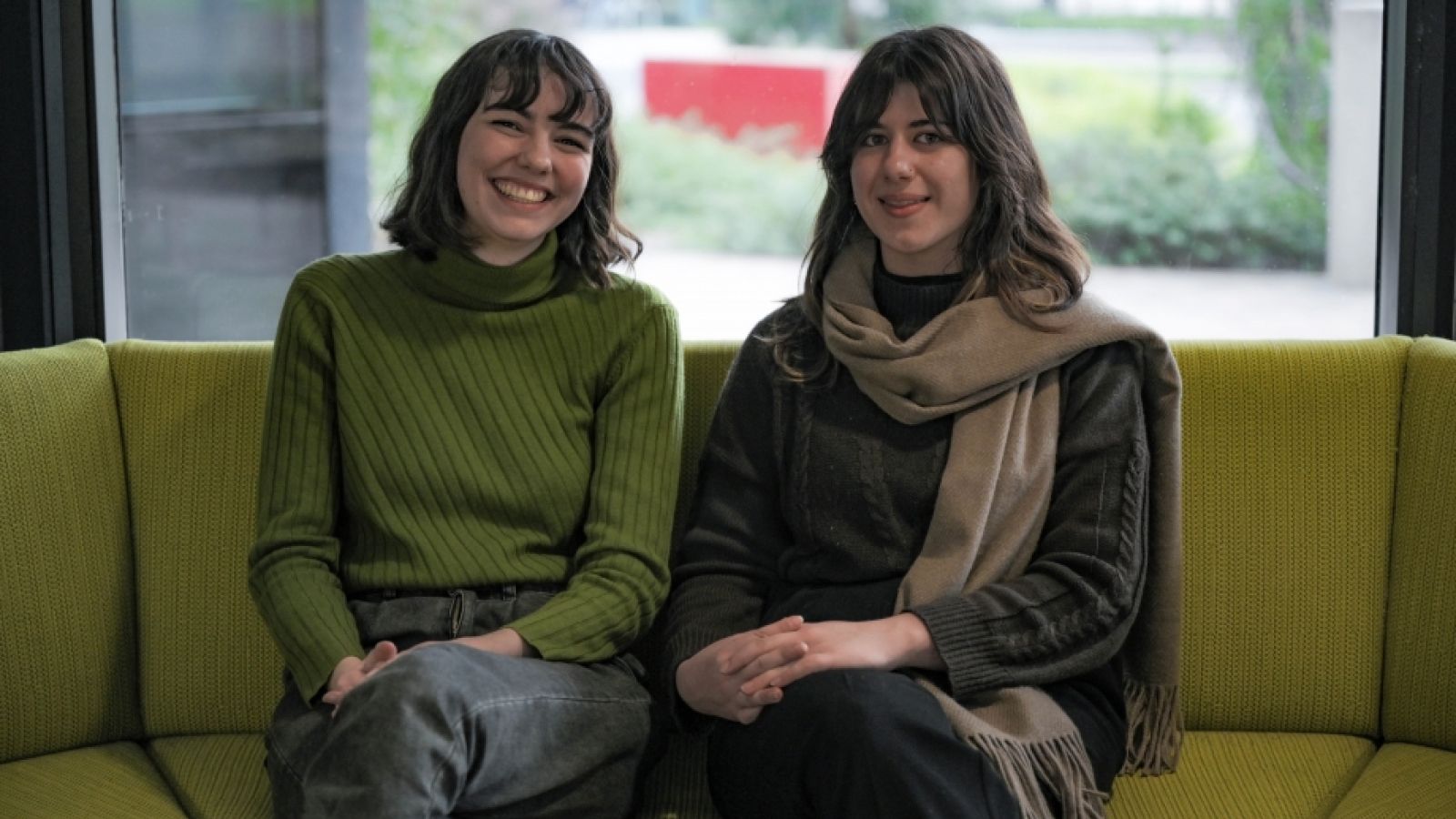Unearthing artistic talent in archaeology and anthropology

Isabella Shaw and Iona Claringbold. Image: Evana Ho / ANU.
The artists behind the exhibition ‘Unearthed’ are more accustomed to plying their trade with trowels, microscopes, and a good notebook rather than paints and canvases.
That’s because the featured artists are students and staff in archaeology and anthropology at ANU.
The exhibition shows the way people from the two disciplines use visual tools and methods to analyse, communicate, and record cultures, societies, and the past. It also draws attention to the human influence: how representing people and information involves interpretation and is influenced by context.
In highlighting these two elements, ‘Unearthed’ embodies what co-organiser and Masters student Isabella Shaw describes archaeology as being: the meeting between the humanities and the sciences.
Fellow co-organiser Iona Claringbold agrees. It’s what she loves about archaeology: “you get to take methods and frameworks from really interesting hard sciences, but you look at them and interpret them through the self-awareness of the humanities.”
“Science is a great tool, but we have to understand that there are people behind that tool and people who are asking the questions of science,” she says. “They’re doing that through a very human lens through their own cultural conditioning – what they’ve experienced throughout their lives and their society.”
One of the artworks representing the more “science-y” side of the exhibition, is a microscopic photo of an osteon; what bones are made up of. It looks like an abstract picture.
“Microscopic pictures, graphs and technical illustrations form a big part of what archaeologists and anthropologists do,” Isabella says. “But it’s often as part of a paper or not acknowledged for its value on its own, which is why it’s quite interesting pulling these techniques that create visual material out of the academia of it all and having it stand on its own and looking at that for the value of an image.”
“Definitely,” Iona says. “I think there is as well the power of non-verbal communication in research. Especially with some of the more conceptual works in the exhibition where there’s a bit more intervention in there to turn it into more of an artwork.”
On that side of things, a Masters student has 3D printed a series of miniature pots, which Isabella explains relates to 3D printing becoming more common in archaeology.
“Often when you record pottery in archaeology, you draw the shape of one side,” she says. “Then these get put into a paper or book but nothing really happens with them. So I think it’s really cool that she’s taking, I think it’s books from the 80s, and pulling the shape of this out and turning it into something physical.”
Isabella is currently doing a Master of Archaeological and Evolutionary Science, having completed a double degree in archaeology and visual art. Iona finished her Honours in archaeology last year, and is planning to do a PhD in archaeology, with a dash of anthropology, next year. As their involvement in ‘Unearthed’ indicates, both are strong proponents of non-traditional research outputs and science communication.
“Obviously, making traditional technical advances is still incredibly important,” Iona says. “But I think it’s essential that the reason they’re being made is to benefit everybody and to help everybody understand things rather than just publishing stuff into the void.”
“I do think archaeology is getting better at reaching outside of the academic ivory tower as such,” Isabella says. “Which is why doing projects like this is really cool.”
“Archaeology is such a human-based research – it’s people’s histories and people’s heritage. Everyone has a right to be involved in the past.”
'Unearthed': art in archaeology and anthropology is showing from 14-25 June at the China in the World Gallery. Attend the launch on 18 June! RSVP here. The exhibition is funded by the ANU College of Arts & Social Sciences and the ANU College of Asia in the Pacific, and being held as part of the ABACUS student conference.
Written by Evana Ho